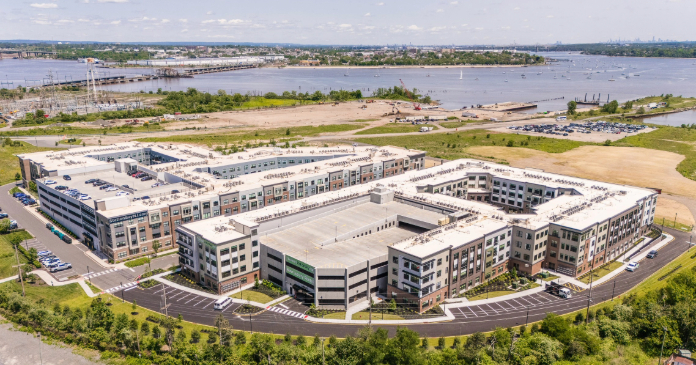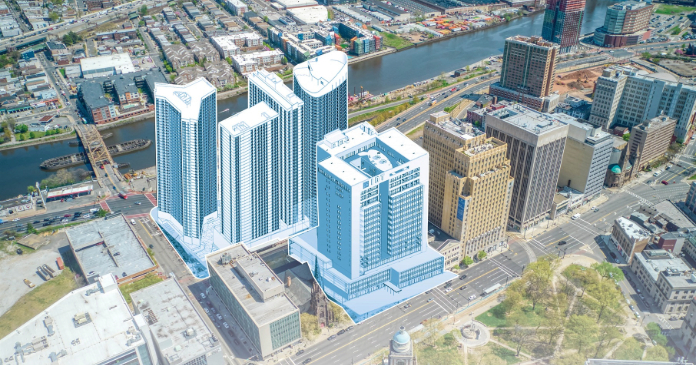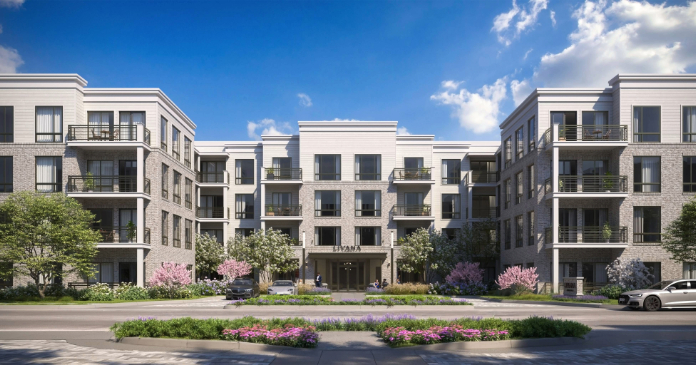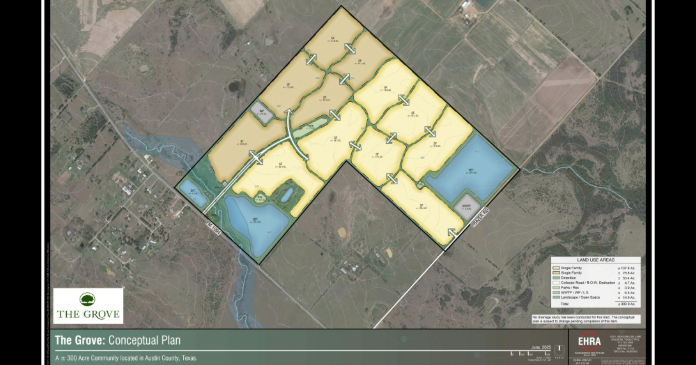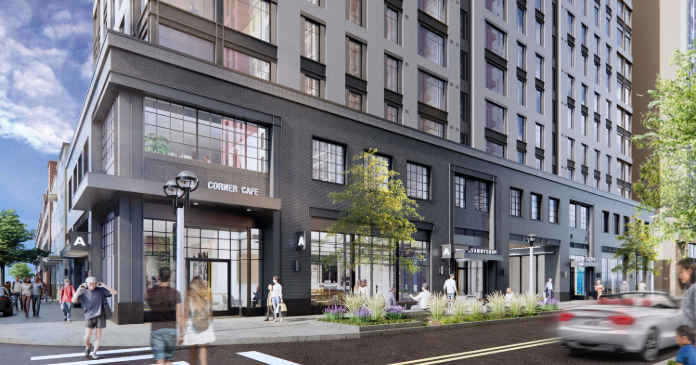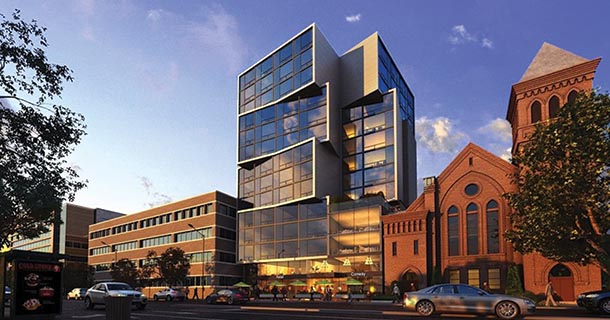
Former U.S. Department of Housing and Urban Development Secretary Julian Castro, U.S. Secretary of Veterans Affairs Robert A. McDonald and District of Columbia Mayor Muriel Bowser joined advocates and housing professionals to officially open the John and Jill Ker Conway Residence. The architecturally striking apartment building includes 60 units of permanent supportive housing for veterans exiting homelessness and 64 affordable and low-income units.
The 124-unit mixed income building is among the first of its kind in the country to have full-time, onsite Veterans Administration (VA) case managers. The structure represents an unusual effort to bring notable architecture and design to housing for low-income and homeless populations.
Located at 1005 North Capitol Street, NE, 10 blocks from the Capitol building, the project will diversify and contribute to the ongoing revitalization of the booming NoMa neighborhood, while preserving affordability for residents. The Northeast Washington neighborhood of NoMa is short for north of Massachusetts Avenue. The community is a collaboration between Community Solutions, a national non-profit organization, and McCormack Baron Salazar, Inc., a property development firm.
“It was like somebody took a ton of weight off my back,” said resident Clifford Rowe, who served in the 101st Airborne Division at the Bay of Pigs and later experienced homelessness for twelve years. “To find out I had a home coming, that was wonderful.” In the 1970s, at the height of his career, he played bass in Elvis Presley’s backup band. But in the 80s, “the bottom fell out,” he says. Rowe was evicted, turned to drugs, lost most of his possessions, including gifts from Elvis, and lived in his car. Now he has come full circle, living less than a mile from the house where he grew up and learned to play music. His apartment includes all new furniture and a few of his longtime belongings including the Les Paul guitar he used to back up The King of Rock ‘n’ Roll.
Commitment to end homelessness
In November, the U.S. Department of Housing and Urban Development (HUD) released the 2016 Homeless Point-in-Time Count, revealing that 350 veterans experienced homelessness in Washington, D.C. on a given night in January of last year. Mayor Bowser and others have driven that number down by more than a third since 2010—including by more than 14 percent since the North Capitol Street building broke ground in 2014.
The Conway Residence represents a new, more strategic approach to aligning affordable housing development with the District’s broader efforts to end veteran homelessness. Veteran tenants were assessed using a research-backed survey, and apartments were offered only to those recommended for permanent supportive housing using that tool, in conjunction with the clinical judgment of VA staff. This reflects a new approach to aligning housing development with a data-driven system for identifying, prioritizing and housing the most vulnerable veterans.
“The John and Jill Ker Conway Residence is the perfect example of the great things that can happen when the public and private sectors unite towards one goal; we are certainly grateful to our federal and private partners who helped make this event a reality,” said Mayor Bowser. “I’m proud to announce to you today that since beginning the push to end Veteran homelessness in the District four years ago—nearly 1,800 Veterans have been housed, with 764 Veterans housed in 2015 and 463 placed into permanent housing in 2016.”
“This project highlights HUD’s commitment to collaborate with local partners to ensure that every man and woman who has served our country has a safe and stable place to call home,” said Secretary Castro. “With partnerships like this one, we know the goal of ending veteran homelessness is achievable.”
“Thanks to great partnerships from the White House to the Interagency Council on Homelessness, HUD, other federal partners, Congress, states, cities, and public and private organizations, we’re making significant progress reducing homelessness among Veterans. To end homelessness among Veterans, in cities across the country we will need more housing like the John and Jill Ker Conway Residence,” said Secretary McDonald. “That’s housing designed with the veteran in mind that provides an environment sensitive to the needs of veterans exiting homelessness and regaining control of their lives.”
“We set out to build something beautiful and iconic because those attributes do so much to inspire new tenants as they begin to rebuild their lives in housing,” said Rosanne Haggerty, president of Community Solutions. “A building that adds value to the neighborhood and livens up the block is also an immediate asset to a community, and that helps local residents remember that the people living in that building are assets as well—that they are neighbors.”
The building’s 60 veterans benefit from the proven “housing first” model which provides people experiencing homelessness with permanent housing as quickly as possible—and then provides voluntary supportive services as needed. In the new building, professional VA case managers work onsite to help residents address health, employment and mental health needs, in collaboration with the DC VA Medical Center. All tenants have leases and pay affordable rents based on their income.
“The District of Columbia Housing Authority is proud to continue its efforts to make sure veterans can call Washington, D.C. home. We are providing $13.4 million in Veterans Affairs Supportive Housing subsidy in this state-of-the-art building. In fact, using our award-winning rapid housing model, we were able to quickly inspect and approve these new units in time so veterans could be home for the holidays,” said DCHA Executive Director Adrianne Todman. “DCHA is also contributing $3.8 million so that an additional 17 individuals can call this building home.”
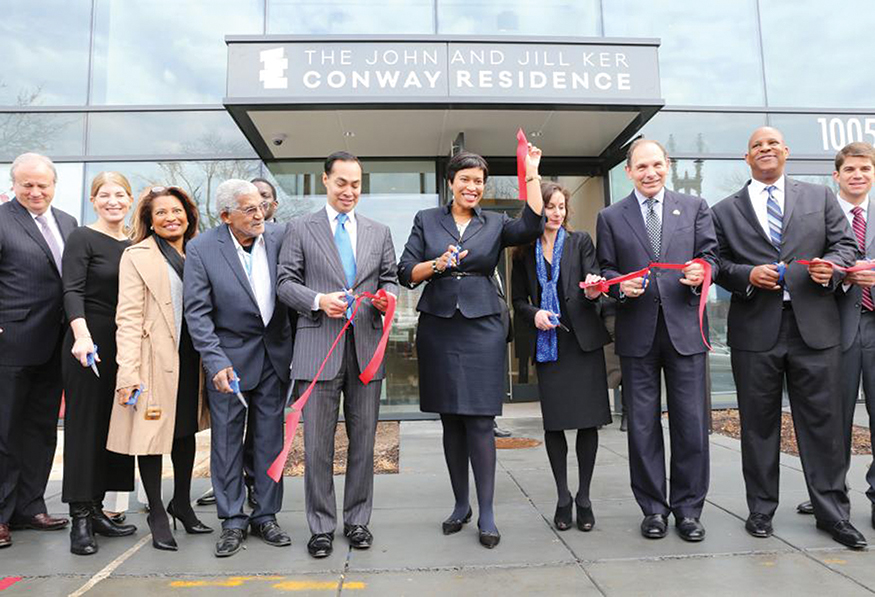
Striking, dignified design
The eye-catching building was designed by Sorg Architects, recognized internationally for its commitment to sustainability and public interest design. The 14-story building has 124 efficiency apartments including 60 for formerly homeless veterans, 47 for individual households making no more than 60 percent of the area median income, and 17 for tenants making no more than 30 percent of the area median income.
The building’s silvery white metal paneling and distinctive “stacked blocks” shape create complementary contrast with surrounding buildings, including the historic red brick of St. Phillips Baptist Church next door. Other key design elements include sustainable building materials and an extensive glazing system to enliven the apartment interiors.
“Our primary design goal was not just to provide housing, but to provide it in a way that preserves the dignity, individuality, privacy and stability of all the residents,” said architect Suman Sorg. “By innovatively using forms, materials, and systems we were able to produce a building that meets and, I would venture, exceeds the design of many high end residential buildings in our city.”
The building is named for Jill Ker Conway and her late husband, John, a veteran of World War II. Jill Conway is a Pulitzer Prize-nominated memoirist, Harvard-trained historian and former chair of the Community Solutions Board of Directors. She was the first female president of Smith College, a post she held for 10 years. Her lifelong concern for veterans was influenced by the experiences of her father and her husband, who served in the First and Second World Wars, respectively.
Collaborative project
“This beautiful building is a living demonstration of the power of partnership,” said Richard Baron, chairman of McCormack Baron Salazar, Inc. “Under the leadership of Community Solutions, more than 50 partner organizations contributed to making this building a reality—motivated by the mission to give veterans and other low-income residents of the District a place to call home.”
Total development costs were $33 million. Financing included a mix of public and private sources. Public sources include Low-Income Housing Tax Credits, tax-exempt bonds, Federal HOME funds provided through the DC Department of Housing and Community Development, and support from the DC Housing Finance Agency and Department of General Services. Private sector financing sources included Chase Community Development Banking, RBC Capital Markets, Citi Community Development and FHLBank Pittsburgh. Significant philanthropic support came from The Home Depot Foundation, The William S. Abell Foundation, and The Harry and Jeanette Weinberg Foundation, among others.
The building is managed by McCormack Baron Management, Inc. GCS-Sigal served as general contractor.
Author: Jake Maguire, Community Solutions



